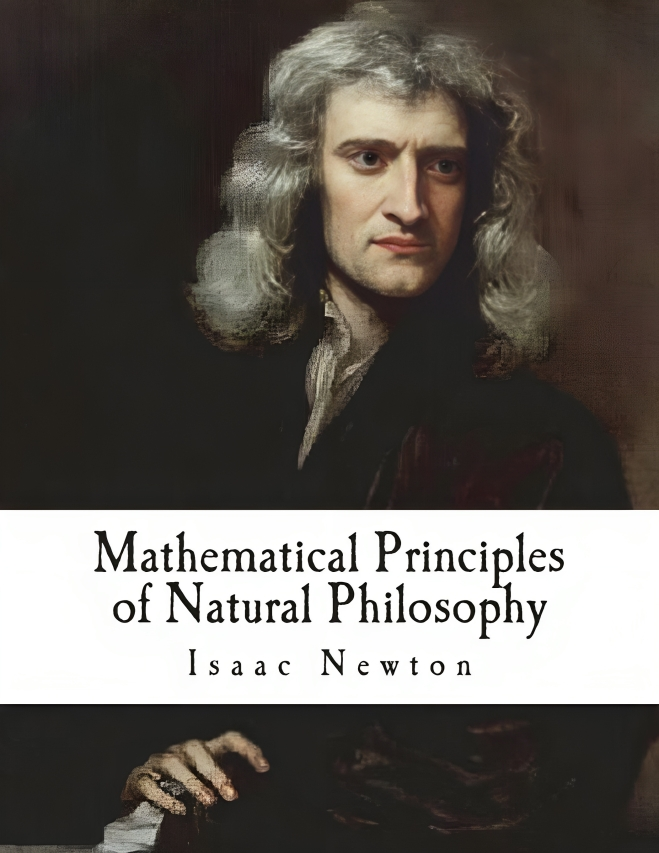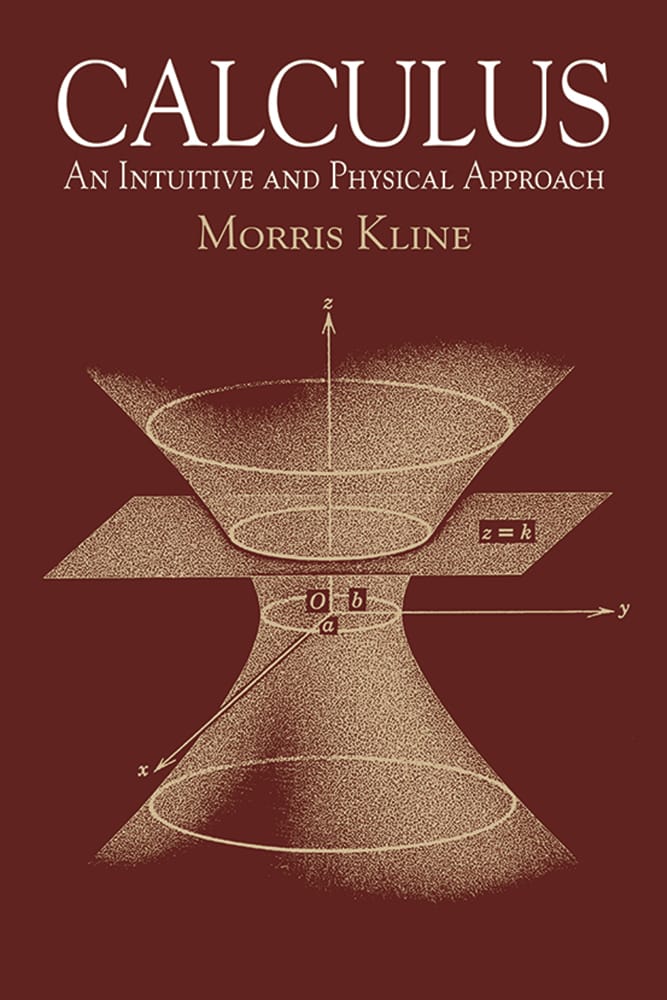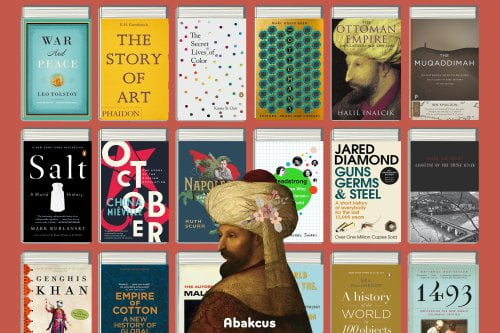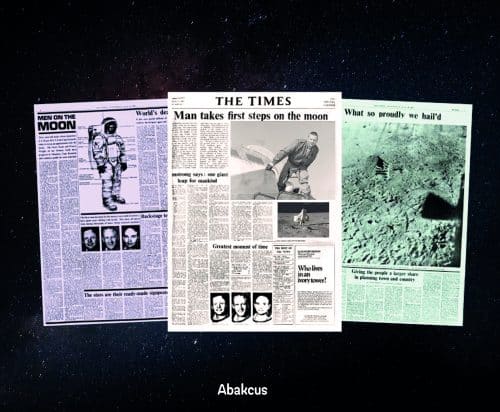In the boundless realm of mathematics, few disciplines stand as tall as calculus, an elegant framework that intricately weaves together the threads of change and motion. From the celestial trajectories of planets to the fluid dynamics of ocean currents, calculus serves as the underpinning language of our universe, articulating the subtle dance of variables in a manner both profound and poetic.
As we embark on this intellectual odyssey, we shall unveil a curated list of the top ten free calculus books that promise to empower your mathematical journey, elevate your understanding, and inspire a profound appreciation for this essential field. These literary treasures are not merely gateways to knowledge; they are the keys that unlock the secrets of differential equations and integrals, inviting both novice explorers and seasoned scholars to delve deeper into the marvels of calculus.
Whether you seek to solidify your grasp of foundational concepts or venture into the complexities of advanced theories, these resources will provide guidance, insight, and the inspiration needed to navigate through the labyrinth of calculus with confidence and zeal. Prepare to embark on an academic adventure that transcends the mundane, immersing yourself in the beauty and elegance of mathematical thought!
The Significance of Free Resources in Learning Calculus

In today’s educational landscape, access to quality learning materials is more crucial than ever, especially in a field as intricate as calculus. This curated list of free calculus books highlights the importance of making knowledge accessible to all learners, regardless of their financial means. Each title within this collection has been selected for its availability at no cost, ensuring that anyone with a desire to learn can do so without barriers.
These free resources democratize education, allowing students, educators, and lifelong learners alike to explore the depths of calculus without the burden of expenses. By harnessing the power of these textbooks, readers can embark on their mathematical journey with confidence, knowing that the key to unlocking complex ideas and theories is within their reach, entirely free of charge.
Whether you are a student striving for academic excellence or a curious individual seeking to expand your understanding, this special list of free calculus books stands as a testament to the belief that knowledge should be shared, cherished, and accessible to all.
G. H. Hardy’s The Integration of Functions of a Single Variable stands as a classic in the realm of mathematical literature. First published before 1923, this work continues to be a valuable resource for students and scholars alike, focusing on the intricate art of integrating single-variable functions.
Hardy’s book is a thorough exploration of integration methods and their applications. It’s not just a mathematical treatise but also a historical document that reflects the mathematical understandings and methodologies of the early 20th century. The author, renowned for his contributions to pure mathematics, offers deep insights that remain relevant even in today’s advanced studies.
The text meticulously covers various integration techniques, providing rigorous proofs and detailed explanations. Hardy’s writing style, characterized by clarity and precision, helps demystify complex concepts, making this book accessible to those with a solid foundation in calculus.
Readers should be aware that this edition is a reproduction of the original publication. Given its age, there are occasional imperfections such as missing or blurred pages, poor-quality images, and errant marks. These issues were either part of the original printing or introduced during the scanning process. While these flaws might be a minor inconvenience, they do not detract significantly from the book’s overall value.
Despite the imperfections, The Integration of Functions of a Single Variable is culturally important. It is a testament to the enduring nature of mathematical scholarship and Hardy’s lasting impact on the field. Bringing this book back into print underscores a commitment to preserving important academic works, ensuring that current and future generations can access Hardy’s profound insights.
The Integration of Functions of a Single Variable by G. H. Hardy is a must-read for anyone interested in the history and development of mathematical integration techniques. While readers should anticipate some quality issues due to the book’s reproduction process, the wealth of knowledge contained within its pages far outweighs these minor flaws. This book is an invaluable addition to any mathematical library and a fitting tribute to Hardy’s legacy.
If you value historical mathematical works and seek to deepen your understanding of integration, Hardy’s book is well worth your time. Enjoy the intellectual challenge and the rich history it offers.
In the realm of mathematical and philosophical literature, few works are as seminal as George Boole’s The Mathematical Analysis of Logic. Originally published in 1847, this book laid the foundational framework for what would eventually become Boolean algebra, a critical component in the design of digital circuits and computer science.
Boole’s work is a pioneering study that merges mathematics with logic. At its core, The Mathematical Analysis of Logic seeks to express logical statements through mathematical equations, fundamentally altering how we understand logic. Boole’s approach was revolutionary for its time, providing a systematic method for solving complex logical problems through algebraic formulas.
The importance of The Mathematical Analysis of Logic cannot be overstated. Boole’s insights paved the way for modern computational theory and artificial intelligence. His methods are still taught in universities today, especially in courses on discrete mathematics and theoretical computer science.
Many of the earliest books, particularly those dating back to the 1900s and before, are now extremely scarce and increasingly expensive. The republishing of these classic works, like The Mathematical Analysis of Logic, in affordable, high-quality editions ensures that Boole’s pioneering insights remain accessible to a broad audience. By preserving the original text and artwork, these modern editions respect the historical context while offering a tangible connection to the past.
The Mathematical Analysis of Logic by George Boole is not just a book; it is a milestone in the history of human thought. Its republication provides an invaluable opportunity for new generations of students, scholars, and enthusiasts to engage with the ideas that have shaped the modern world. Whether you are a seasoned mathematician or a curious reader, Boole’s work is a treasure trove of insights waiting to be explored.
Few textbooks in the realm of mathematics boast the reputation and enduring significance of G. H. Hardy’s A Course of Pure Mathematics. Since its debut in 1908, this seminal work has guided countless students through the intricate and fascinating world of calculus. This review aims to explore the key themes and enduring relevance of Hardy’s masterpiece.
One of the most striking aspects of A Course of Pure Mathematics is Hardy’s ability to marry enthusiasm with rigor. His passion for the subject shines through on every page, making what could be a dry topic come alive with excitement. This enthusiasm is infectious, encouraging readers to engage deeply with the material.
Hardy dives into the foundational concepts of differential and integral calculus, offering clear and precise explanations. His approach is methodical, ensuring that students grasp these fundamental ideas before moving on to more complex topics. This solid grounding is essential for any budding mathematician.
Another critical area Hardy covers is the properties of infinite series. His exposition on this topic is both thorough and accessible, making a potentially intimidating subject approachable. By breaking down complex ideas into understandable segments, Hardy ensures that readers can follow along and build their knowledge incrementally.
The concept of limits is a recurring theme throughout the book. Hardy’s treatment of this topic is particularly noteworthy for its clarity and depth. He takes the time to explore various aspects of limits, ensuring that readers develop a comprehensive understanding of this crucial mathematical concept.
The longevity of A Course of Pure Mathematics is a testament to its quality and relevance. Successive generations of mathematicians have turned to Hardy’s work at the start of their academic journeys, finding in it a reliable and inspiring guide. The blend of missionary zeal and purist rigor has ensured that this book remains a staple in mathematics education.
In conclusion, G. H. Hardy’s A Course of Pure Mathematics is more than just a textbook; it is a timeless piece of mathematical literature. Its combination of enthusiastic exposition and rigorous detail makes it an invaluable resource for anyone beginning their exploration of calculus. Whether you’re a student, an educator, or simply a lover of mathematics, this book deserves a place on your shelf.
If you are embarking on your mathematical journey or looking to deepen your understanding of calculus, A Course of Pure Mathematics by G. H. Hardy is a must-read. Explore the world of mathematics with a guide who brings passion and precision to every page.
For anyone looking to demystify the complexities of calculus, “Calculus Made Easy” by Silvanus P. Thompson has been a go-to resource for generations. In its latest edition, expertly revised by Martin Gardner, this classic text continues to provide a clear and approachable introduction to calculus, making it accessible to readers of all levels.
One of the standout features of “Calculus Made Easy” is its ability to break down complex ideas into simple, digestible parts. The book’s conversational tone and straightforward explanations make it an excellent choice for self-learners who may feel intimidated by more traditional calculus texts.
Whether you’re a student looking to get ahead, a professional needing a refresher, or simply someone interested in learning calculus for personal growth, “Calculus Made Easy” offers a user-friendly and comprehensive guide. The latest edition, with its thoughtful updates and engaging practice problems, ensures that this classic text remains relevant and invaluable for today’s readers.
Discover the timeless brilliance of Science and Hypothesis, a renowned text in the history and philosophy of science. Now, in this first new translation in over a century, experience unpublished material that was missing from previous editions.
This updated version addresses errors made in earlier translations, giving you a clearer understanding of Poincaré’s ideas and arguments on the role of hypotheses in math and science. With a modernized approach, Poincaré’s original meaning shines through, while David J. Stump’s introduction offers fresh insights into Poincaré’s philosophy of science.
Delve into Poincaré’s hierarchy of the sciences, from arithmetic as the foundation, to geometry as the science of space, to mechanics and the rest of physics. This indispensable translation is a must-read for philosophers of science and scientists grappling with the mysteries of space, time, and relativity. Experience the work that proves why Poincaré’s influence remains relevant to this day.
Elementary Illustrations of the Differential and Integral Calculus offers a fascinating glimpse into the foundational concepts of calculus, presented in a manner that retains the authenticity and charm of its original 19th-century publication. This historical work is not just a textbook; it is a cultural artifact that has been revived for modern readers who appreciate the evolution of mathematical thought.
The publisher’s dedication to preserving historical works is evident in their approach to reprinting Elementary Illustrations of the Differential and Integral Calculus. Rather than employing OCR technology, which often introduces typographical errors and confusing formatting, they have chosen to reproduce the book in its original format. This careful preservation effort ensures that readers experience the text as it was intended, with all its original nuances intact.
While there may be occasional imperfections, such as blurred pages or errant marks due to the scanning process or the quality of the original work, these minor flaws do not detract from the book’s overall value. Instead, they add to its historical character, offering a more authentic reading experience. The publisher’s global book preservation commitment allows readers to access important historical texts that might otherwise be lost to time.
The book provides a series of illustrations and explanations that make the complex concepts of differential and integral calculus more accessible. It’s an invaluable resource for math enthusiasts, historians of mathematics, and educators who want to gain insight into how these fundamental ideas were taught and understood in the past
Elementary Illustrations of the Differential and Integral Calculus is a treasure trove for those interested in the history of mathematics. The publisher’s commitment to preserving the book’s original format ensures that readers can appreciate its historical and educational significance. Despite the occasional imperfections, the book remains a valuable resource for understanding the early development of calculus.
For anyone interested in the roots of mathematical education and the evolution of calculus, this book is a must-read. It not only enriches our understanding of mathematics history but also honors the legacy of those early educators who laid the groundwork for modern mathematical thought.
Whether you are a student, educator, or history enthusiast, this historical reprint offers a unique opportunity to explore the origins of calculus. Add “Elementary Illustrations of the Differential and Integral Calculus to your collection today and step back in time to experience the fascinating world of 19th-century mathematics.
Isaac Newton’s timeless masterpiece delves into the wonders of the universe with a powerful mathematical language. Unlocking the secrets of celestial bodies and earthly motion, Newton’s groundbreaking discoveries have ushered in the Scientific Revolution.
Within the pages of The Principia, we uncover a rhythmic pulse in the fabric of space, where invisible forces align with visible characteristics. From unraveling the mysteries of time to predicting celestial motions, Newton’s revolutionary calculus unveils a clockwork universe of perfect symmetry.
Divided into three books, Newton’s work presents a comprehensive exploration of natural principles. While the first and second books read like a textbook, the third book offers captivating insights into astronomy, culminating in a delightful finale.
Although indebted to Kepler’s laws of planetary motion, Newton’s mathematical approach to celestial mechanics stands out. Surprisingly, Kepler receives only a passing mention, despite his influence on Newton’s laws of motion and gravity.
While Newtonian mechanics held sway for centuries, the advent of relativity and quantum physics provided new perspectives on the nature of reality. Nonetheless, this enlightening journey through Newton’s work paves the way for further exploration and understanding.
Calculus is a foundational subject in mathematics, and finding the right textbook can make all the difference in understanding its complexities. Serge Lang’s A First Course in Calculus stands out as a comprehensive and detailed resource for anyone embarking on their first year of calculus studies.
One of the standout features of this textbook is its use of real-world applications. Lang effectively demonstrates how calculus can be applied in various contexts, making the material more relatable and easier to understand. Whether it’s physics, engineering, or economics, the examples provided help bridge the gap between theory and practice.
Another unique aspect of this book is the inclusion of detailed solutions to a significant portion of the exercises. Located at the back of the book, these worked examples serve as an invaluable resource for students. They provide step-by-step guidance and reinforce the concepts covered in each unit. This feature differentiates this version from previous editions and adds immense value for learners aiming to deepen their understanding.
Serge Lang’s A First Course in Calculus is an exemplary textbook for first-year calculus students. Its comprehensive coverage, real-world applications, and detailed solution sets make it a valuable resource. Whether you’re a student looking to master calculus or an instructor seeking a reliable teaching tool, this book is highly recommended.
Calculus isn’t just about solving equations or memorizing formulas; it’s the gateway to understanding the profound beauty of mathematics. Michael Spivak’s Calculus sets the gold standard for introductory texts in mathematical analysis, and for good reason.
Spivak’s Calculus is not your typical high school calculus book. It’s a deep dive into the logical foundations of calculus, aimed at presenting the subject as a rigorous mathematical theory rather than a collection of tools and techniques. This approach makes it ideal for honors students and mathematics majors who crave a deeper understanding of the subject.
One of Spivak’s strengths is his ability to provide leisurely yet thorough explanations. Recognizing that analysis is a challenging subject, he uses a profusion of examples and illustrations to clarify difficult concepts. This easy-going approach makes the material more accessible and rewards the effort put in by the reader.
Exercises in Spivak’s Calculus are not merely routine problems but are thoughtfully designed to reinforce the material covered in the chapters. They range from straightforward applications to more challenging problems that encourage creative thinking and a deeper understanding of the concepts.
Spivak’s Calculus is ideal for those who seek an alternative to bulky calculus textbooks and more intimidating introductions to real analysis. It offers a balance between rigor and readability, making it a modern classic in the field.
In conclusion, Spivak’s Calculus is a masterpiece that continues to be celebrated for its clarity, depth, and ability to make complex topics accessible. Whether you are an aspiring mathematician or simply passionate about understanding the foundations of calculus, this book is a must-read.
Calculus: An Intuitive and Physical Approach is widely celebrated for its unique method of making calculus concepts more accessible and understandable. The textbook prioritizes intuition and physical understanding over formalism, which is particularly beneficial for students who may struggle with more abstract mathematical ideas. By using real-world examples and visual aids, Calculus: An Intuitive and Physical Approach bridges the gap between theory and application, allowing students to see the practical relevance of calculus in everyday life.
The clear and conversational style in which the material is presented makes it easier for readers to grasp complex concepts without feeling overwhelmed. Additionally, Calculus: An Intuitive and Physical Approach includes a variety of problems that not only reinforce students’ comprehension but also enhance their analytical and critical thinking skills. These features collectively make Calculus: An Intuitive and Physical Approach an excellent resource for those aiming to develop a deep and intuitive understanding of calculus.





















